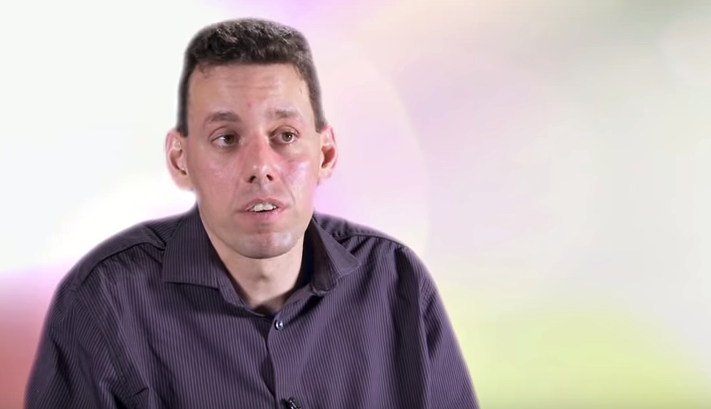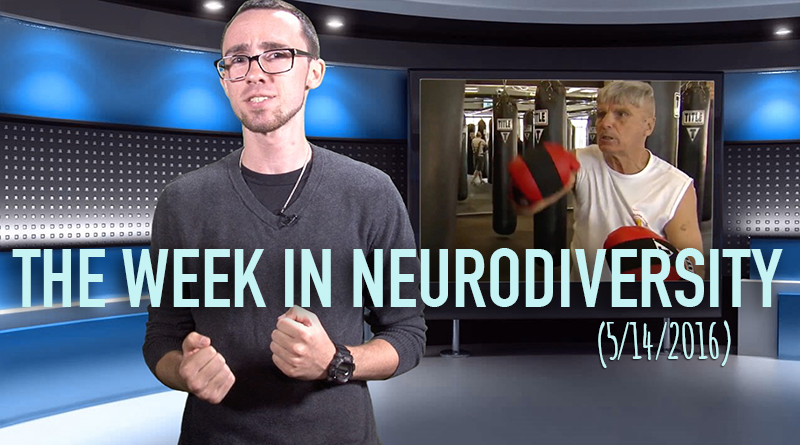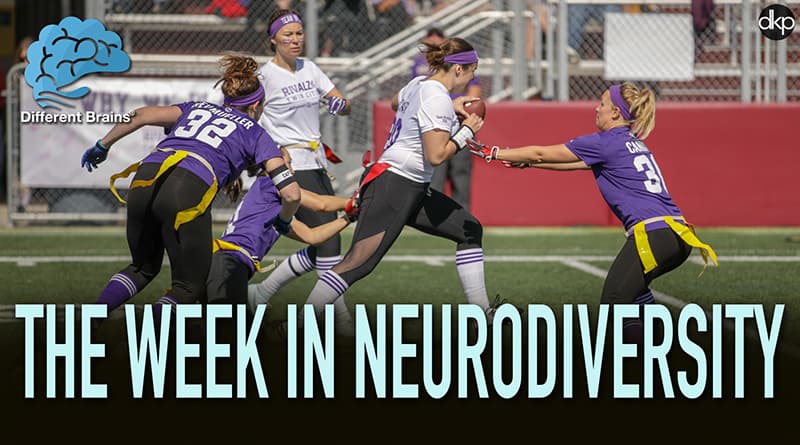2023 In Review: Neurodiversity Change-Makers | EDB 314

In the second part of our review of 2023, we hear from some of the neurodiversity change-makers that have appeared on the show.
FEATURED ARE:
DR. MICHAEL ALESSANDRI – full interview | learn more about their work here
CHRISTINA SULLIVAN – full interview | learn more about their work here
HINRIK ATLASON – full interview | learn more about their work here
TERC team members DR. ZACHARY ALSTAD & DR. IBRAHIM DAHLSTROM-HAKKI – full interview | learn more about their work here
HILARY KOKENDA – full interview | learn more about their work here
DR. MAI PHAM – full interview | learn more about their work here
DR. COLE GALLOWAY – full interview | learn more about their work here
DR ERIN BROOKER LOZOTT – full interview | learn more about their work here
JOSEPH LENTO – full interview | learn more about their work here
LAUREN SHURE – full interview | learn more about their work here
JR HARDING – full interview | learn more about their work here
AUDIO PODCAST VERSION:
Or look for us on your favorite podcast provider:
iTunes | Stitcher | SoundCloud
FULL TRANSCRIPTION
Note: the following transcription was automatically generated. Some imperfections may exist.
DR HACKIE REITMAN (HR): Hi, I’m Dr. Hackie Reitman. Welcome to Exploring Different Brains. We are finishing our year-in-review by revisiting some of the neurodiversity change-makers, whom we have highlighted in the year 2023.
Let’s start with DR. MICHAEL ALESSANDRI (MA), executive director of the University of Miami-Nova Southeastern University Center for Autism and Related Disabilities.
MA: I think the most important thing is for every organization to realize is: nobody’s a threat, there’s so much demand, right? There’s so much need, that we could double the number of autism organizations we have now and still not meet everybody’s needs. So, you know, my career’s always been about partnerships. It’s always been about strategic partnerships, partnerships that make sense for the other organization, for myself, and ultimately, for the community as a whole, I mean, there’s, it’s not a surprise that I’m so involved in so many other organizations, because I see the need for us to all be connected in some meaningful way. And that’s everything from, you know, large international advocacy groups, if you will, to statewide or local groups that are doing their part to service providers, like myself that are doing our part and then everybody else in between the doctors, the teachers, the therapy centers, like we would there, honestly, there’s no need for any competition in this space. Because the demand, I mean, I’m telling you, the demand is, is through the roof, I think it’s overwhelming some days when I sit back and think about how much we’re doing. And still how much more needs to be done. Like you think every year of your career, you’re closing the gap a little bit more. But you know, you see the prevalence rates now one in 36. So you may have thought you were closing the gap. But then you get this flood of new clients who discover that they have autism, or they have a need for some kind of support. And you realize, you know, and maybe it’s age and wisdom, I don’t know what it is, but I I don’t see threats anywhere anymore. Nationally, I just see opportunities for new partnerships.
HR: CHRISTINA SULLIVAN (CS), founder and clinical director of Evolve Learning Community.
CS: I believe that the current education system that we have started during the Industrial Age, and it was created to create workers. And what we want to create are thinkers, and problem solvers, and inventors and entrepreneurs, and people who can find what their passion is, and follow that passion. It may not be a traditional path. And we’re so busy teaching math and science and history and reading and writing. And those things are important. But what about the kid who comes in and can build a computer by the time they’re 10? Are we really and who has all the different learning disabilities? Are we really going to push that kid to be focused on algebra? When they really need to be go build more computers? And I say that because we have a student, we had a student and he that’s exactly what he could do. He struggled with dyslexia. dysgraphia, dyscalculia. Like he really struggled. And we worked with him one on one for a long time. But that boy could build computers, and he can fix any electronic thing. And he was our IT guy at our school for the five years he was there. And I mean, he’s amazing. But what if we kept trying to fit him into this square peg? Right, like we decided early on, that’s not where he fits. And there’s so many kids like that.
HR: HINRIK ATLASON (HA), founder and CEO of Atlas Primer.
HA: We fundamentally believe that the disadvantage, people who are neurodivergent have in the educational system is not because they are neurodivergent. But it’s the lack of flexibility in the educational system. So by by celebrating our diversities and differences, and looking at neuro diversity, more as just the diversity that it is that we all think differently, we process information differently. We can create more flexibility that allows more people to reach their full potential.
HR: Now let’s hear from some of the team members from TERC.
DR. ZACHARY ALSTAD: As a student, again, as when I was growing up, I was diagnosed with ADHD and dyslexia and one, there were a lot of ways that I did not fit into the educational system. You know, and a lot of painful experiences in informal educational environments. And one way that I found a way in was through technology and through games and, and learning through these kinds of virtual experiences. And so I think this work is really important, because not only can we make these kinds of tools, for students that learn differently, but we can co make these kinds of tools with students who learn differently, they can be a part of this process, we can incorporate new technologies that they’re interested in, that we already know that, that they find compelling and effective, because they’re using them. Right, that should be the most important question for if we should use this tool is are they already using it? Do they like it right? Instead of this old antiquated model of I have this idea, and I’m going to impose this on on students and and so yeah, that’s why I think this work is especially meaningful.
DR. IBRAHIM DAHLSTROM-HAKKI: A lot of innovation in the in the STEM field comes from those that think outside the box. And many new new or divergent thinkers approach things from a different perspective. And that often can open up whole areas of innovation in STEM fields, and and so we, we feel strongly that finding ways to adapt learning to work for a broader audience is not only benefiting those individuals, but is bringing talent into areas of stem that really need that energy and creativity and different way of thinking to innovate, grow.
HR: HILARY KOKENDA (HA), COO of Zavikon.
HK: Our mission is to place neurodivergent individuals and those with disabilities and career oriented meaningful jobs. The vision we have is to address the unemployment and underemployment rates for this community, which are really bad as Hackie I’m sure you know, you know, autism alone. Yeah, I hear different numbers from different studies. But usually, it’s usually upwards of 80% of autistic individuals are unemployed, which is mind boggling to me. And, you know, it’s not just a social issue, it’s an economic one, if we employ only 1% More of these individuals, the GDP could get a boost of up to 25 billion. So this is something that we all have to be a part of, I believe we all have to work to improve this issue. And it’s gonna benefit everybody directly and indirectly, it’s just why it’s just so important.
HR: DR. MAI PHAM (MP), founder of IEC.
Mai, what is one piece of advice you would have for either an individual with IDD or their loved ones that are discouraged? By the challenges, they are facing getting care,
MP: I really want community members to approach this from a position of strength to believe in the genius of your own lived experience, and to view the clinicians on the other side of those conversations as potential partners, where you may be in the role of teacher and coach and that if you can walk into those relationships with tips on how to work with me, or here’s what I’ve heard other clinicians do that make my your life easier and my life better. You know, it won’t work every time and not every clinician is going to be open to it. But I think that that type of approach has several benefits. One they will learn something if they’re open to it. And two, you will feel agency and that at the end of the day is the most important thing to us. By you see is not here to have health care, do things to view. IEC is here to make health care receptive to working with you to optimize your health and your life.
HR: Go Baby Go founder and University of Delaware professor DR. COLE GALLOWAY (CG).
CG: There’s very strong theory called embodied cognition, as the term for that most things we learn in our lives, we learn through physically interacting with the world. And especially in the first three to five years of life, most of the big things, the key is getting social animals like ourselves into the mundane magic of the actual world. And that takes mobility. And when you do that with experimental animals, or humans, you see revolutionary changes in the brain. In fact, this idea of enriched environment and embodied cognition are some of the most grounded principles and all in neuroscience, meaning when you take a social animal and deprive them, of other animals, oh, they’re social animals and an enriched object environment, data, basically, for humans, it’d be day to day work day they play social friends, all the drama of living in a, in a crazy world, your brain begins to lose function, and that’s a neurotypical brain. When you put that same social animal in a and match it to an environment that meets it where it is. Neuro ly behaviorally, friendship wise, mental health wise, and then helping you expand out into the world is such an active area of study and scientists do not study small effects, scientists study huge effects.
HR: DR ERIN BROOKER LOZOTT (EBL), Program Director for the ELS for Autism Foundation.
EBL: ELS for autism is here, we are assessable. Global globally, one of our goals is to become a world leader in transdisciplinary, customized programs for individuals with autism spectrum disorder. And what we do really well. And what we gain a lot of support from employers with is being able to say that everybody has the right to work, everybody can work, everybody should work. And even if you need more support, or you communicate differently, that that shouldn’t provide you with limitations if we know how to teach somebody how to support you. And so we are doing a lot of research and replication of our programs to be able to make sure we’re doing it right and getting the guidance of autistic adults and the employers that are hiring our adults. If we can create a network of really well trained professionals that believe that family is critical and understand the evidence based practices and understand that we need to think outside the box and do things a bit differently that had been done in the past. But we need to research what we’re doing to show that not only can we do it, but we can validate that what we’re doing is really transforming the life of a person with autism from their perspective, then, then we’re doing what we Mr. and Mrs. Els really set out to do and they wanted a better world for their son.
HR: Educator and musician, JOSEPH LENTO (JL).
Why you think that standardized testing, which is one size fits all doesn’t work for all of our different breeds?
JL: Well, it’s, it’s evident in the disparity in results. And you as a medical doctor, know that if you’re assessing a patient, and something comes up, that doesn’t seem right, you have a series of other diagnostic tools that you use to say, Does the patient need surgery? Does the patient need this? Are they really that? I don’t see it that way? The test says yes, let’s try something different. In education, we really don’t do that. You know, we great people, you’re a 65, you’re a 55 or an 85, you know, whatever it might be, that doesn’t tell us much about anything. And I’ve seen this firsthand, as a musician, if I’m doing something and it’s not working, I don’t keep doing the same thing. I try something different in education. If we have a student who’s a who’s always around 65 or 70. We don’t really look further into why that is. We might say, well, they might have a reading issue. They might have a mathematic issue, they might have some sort of processing issue, but they don’t really get into what is it? What’s an alternative? How can we, you know, treat this student so we can get those grades up?
HR: Psychologist LAUREN SHURE (LS).
LS: The conversation of social justice can be divisive. If for no other reason because we have to talk about our differences, right? We’re kind of talking about these dynamics and differences we have and how that positions us maybe to be have advantages or disadvantages. But at the end of the day, I think there are things that we all need as human beings. And you know, Carl Rogers talked a lot about this, you know, the, the father of humanistic psychology, and he talked about growth, facilitating conditions. And there are certain conditions that human beings seem to thrive under. And I think there’s at least two pieces that are really important for everyone. Number one is connection and community, right, we all want to belong. And then the other piece is we all want to figure out who we are, right? We want to have purpose and meaning for ourselves. So I think when I think about mental health and social justice, I’m thinking about maybe just social justice in general, but I can apply this to mental health. How can we create communities, families? How can we be stewards of allowing people to live within growth, facilitating conditions? How can we promote community and connection? And how can we honor everyone where they’re at? ,
HR: Let’s end with disability champion, self advocate, FSU professor, and author JR HARDING (JRH).
JRH: Universal design has seven principles involved. And it’s the next evolution of what x is. When you go into a property, or business, or a hotel, or a park, and it just feels good, I, there aren’t barriers, you’re not standing there waiting for someone to open the door for you. Or you’re able to independently access all goods and services. It just simply makes good sense. Why. And so building building spaces and programs under the UD principle, you know what? It removes the need to have as many reasonable accommodations, because access has been built in. So if you think about why did the iPhone work so well? Well, it was intuitive. It was logical, it was simple to use. It’s kind of like going to the ATM, you can do that whether you’re visually impaired or not visually impaired, it’s intuitive. They all operate the same way. Well, that’s the same idea. And some of the challenges I put on my students, it’s to go out and look at business businesses, look at state and local government operations, and say, Hey, are we meeting a minimum standard here, where you still feel a little different, as opposed to a business who brought the universal design component, where you just simply integrate seamlessly and naturally.




